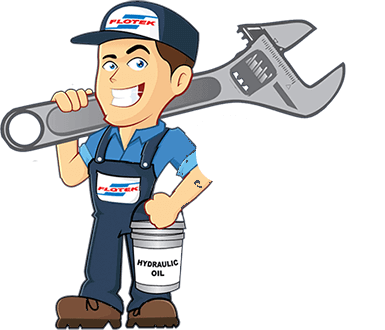The steps involved in repairing and maintaining hydraulic cylinders will vary depending on what variety of cylinders you have got, but we’ve outlined some general guidelines regardless of which kind you have got.
What is a Hydraulic Cylinder?
The thought for a hydraulic cylinder originated with the ideas of French mathematician Blaise Pascal. He studied fluids, pressures and vacuums in the 1640s. He discovered that fluids don’t compress the identical way that air does.
A Hydraulic cylinder is one of the components of a hydraulic system, whereas a hydraulic system is a technology where fluid, most ordinarily referred to as hydraulic oil, is used to distribute energy from a motor to an actuator.
A hydraulic cylinder is additionally called a linear hydraulic motor and could be a mechanical actuator used to offer a unidirectional force through a unidirectional stroke. Its many applications, notably in construction equipment (engineering vehicles), manufacturing machinery, and engineering science.
Benefits and Faults of Hydraulic Cylinders
Hydraulic cylinders can provide enormous power to machines whether or not they’re located secluded from the facility source. The cylinders have efficient power-to-size and power-to-weight ratios. The cylinders come equipped with hydraulic speed control and automatic overload protection
Some faults on Hydraulic Cylinders are leaking seals, improperly fitted seals, corrosion or marks on the cylinder seal grooves, oil contamination or incorrect metal work clearances are just some reasons that seals may leak. Corroded barrel: This failure is caused by water or other contaminants within the oil and may additionally indicate improper equipment usage.
Varieties of Hydraulic Cylinder
There are certain varieties of Hydraulic Cylinder; the single-acting cylinders where it can only operate in one direction; its hydraulics move the rod to a 1 direction and therefore the counter motion only happens by itself or by a mechanical structure or by an external load, Double-acting cylinder operate to 2 directions; the cylinder is moved to 2 directions with hydraulics as in back and forth or out and in.
Piston separates the chamber and because the force per unit area affects the piston, the piston moves the rod. Tie-rod cylinders may be a variety of cylinders held together by four or more threaded tie bolts that run the length of the whole cylinder tube. These bolts hold the baseplate and head together, which is the opposite of Welded body cylinders that haven’t got any tie rods.
The barrel is welded onto the tip caps. The ports are welded to the barrel. The front rod gland is sometimes threaded into or bolted to the cylinder barrel. That permits the connecting rod assembly and also the rod seals to be removed for service and lastly is Telescopic cylinders are a special design of a hydraulic cylinder or pneumatic cylinder as well as pulley system which offer an exceptionally long output travel from a really compact retracted length.



